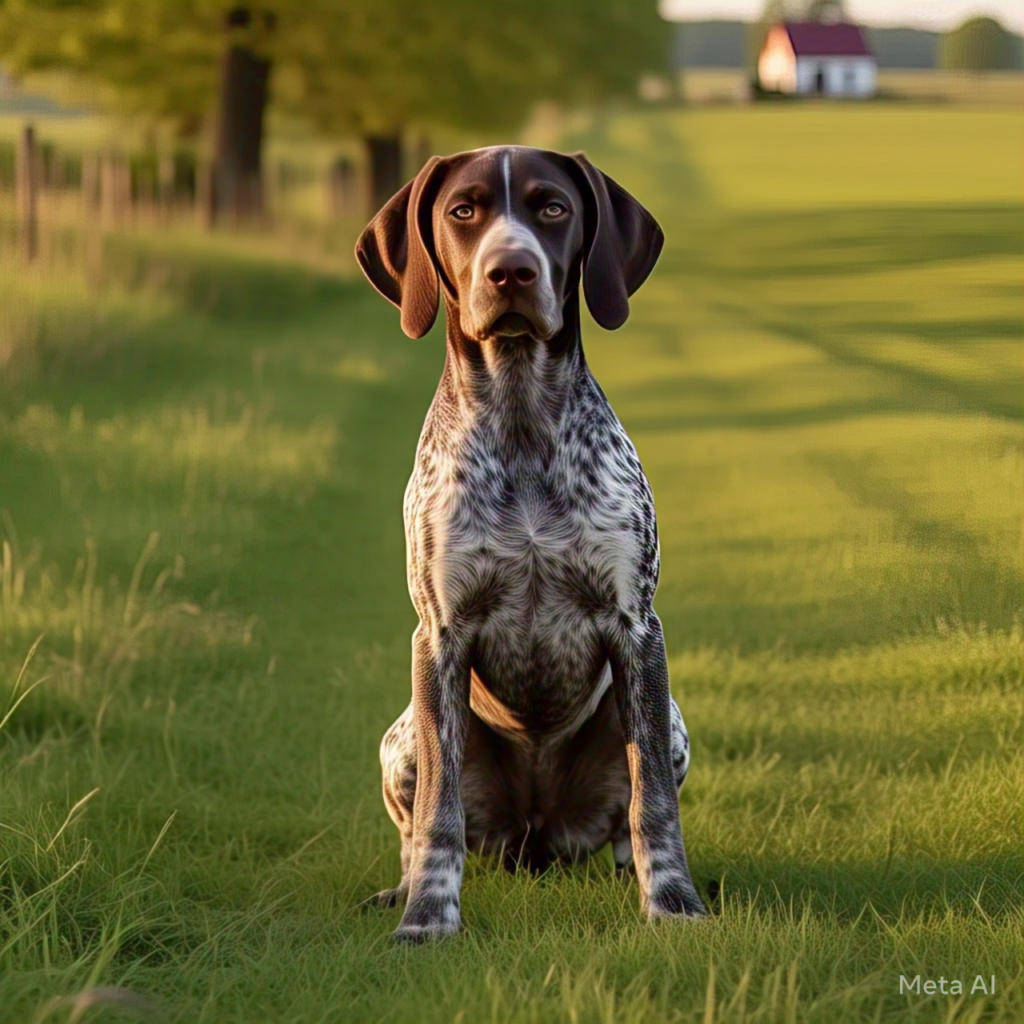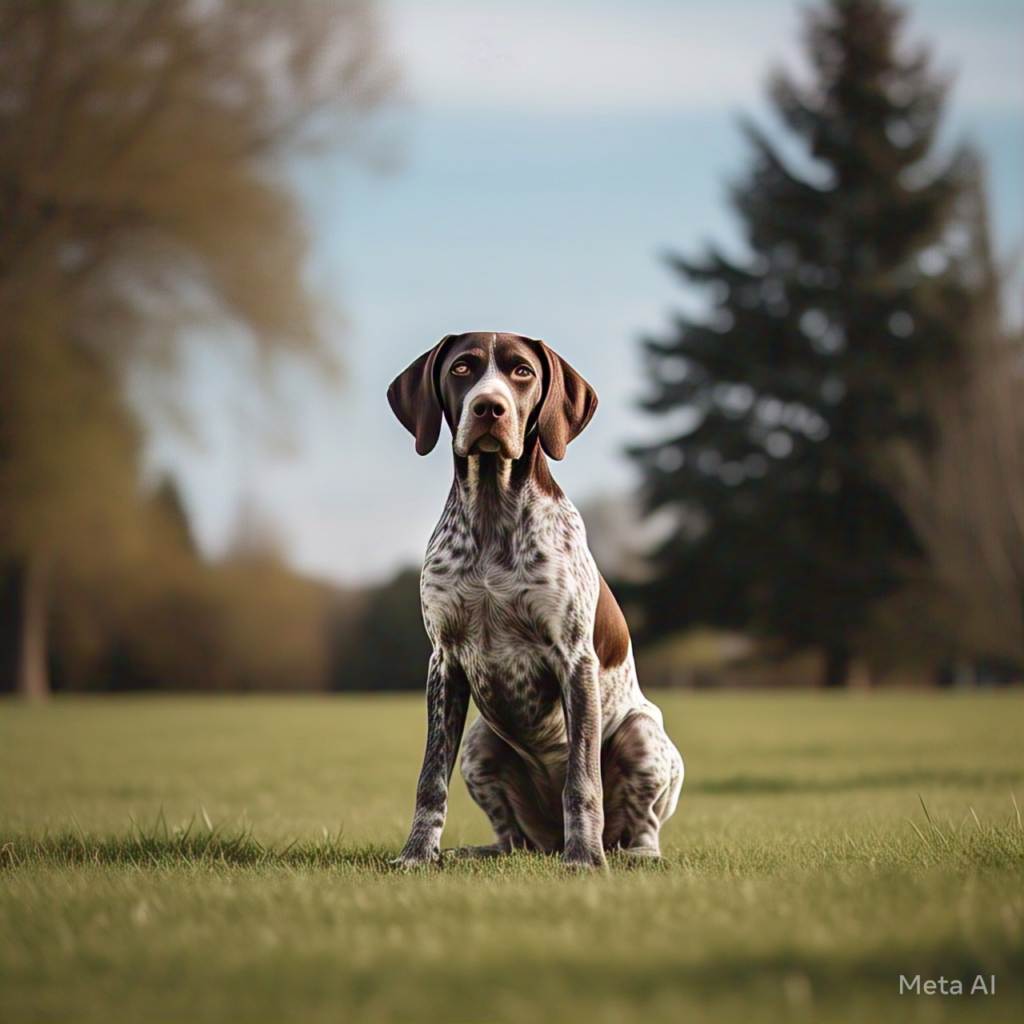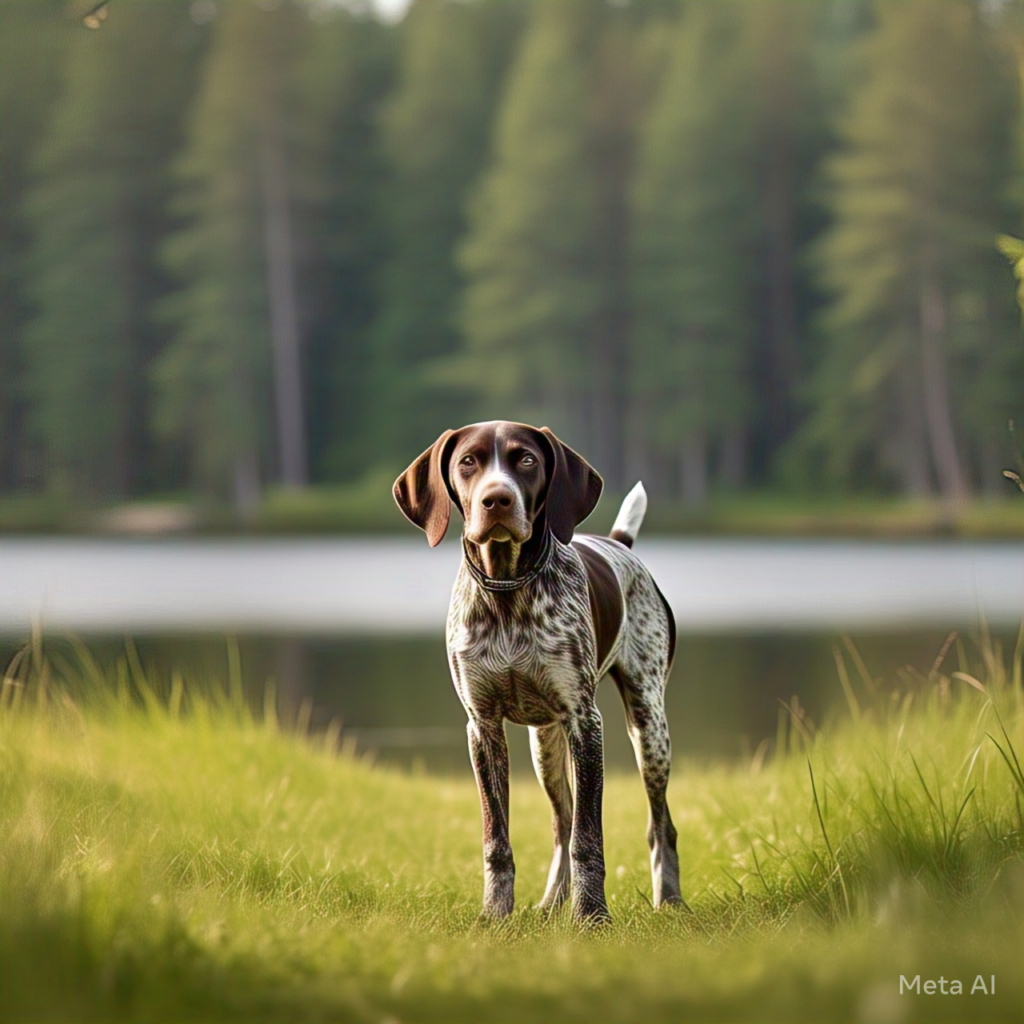
The German Shorthaired Pointer (GSP) is a breed that embodies versatility, intelligence, and boundless energy. Originally bred in Germany during the 19th century, this medium-to-large-sized dog was designed as an all-purpose hunting companion, capable of pointing game, retrieving on land and water, and tracking wounded prey. Today, the GSP remains a favorite among hunters, but its friendly demeanor, athleticism, and adaptability have also made it a beloved family pet and competitor in dog sports. This article explores the breed’s history, characteristics, training needs, care requirements, and what makes them such exceptional companions.
A Brief History of the German Shorthaired Pointer
The German Shorthaired Pointer’s origins trace back to the 1800s when German breeders sought to create a multi-purpose hunting dog. They crossed various breeds, including the Spanish Pointer, English Pointer, and local German hounds, to develop a dog with a keen nose, strong retrieving instincts, and a streamlined physique. The result was a pointer that could work efficiently in diverse terrains—fields, forests, and wetlands—while maintaining a cooperative and trainable nature.
The breed’s development was meticulous, with an emphasis on eliminating undesirable traits like aggression or stubbornness. By the late 19th century, the GSP was standardized, and its reputation grew beyond Germany. It was recognized by the American Kennel Club (AKC) in 1930 and has since become one of the most popular sporting breeds in the United States and worldwide. Today, GSPs are celebrated not only for their hunting prowess but also for their adaptability to modern lifestyles.
Physical Characteristics and Appearance

German Shorthaired Pointers are medium-to-large dogs, typically standing 21 to 25 inches at the shoulder and weighing between 45 and 70 pounds, with males generally larger than females. Their build is athletic and muscular, designed for endurance and agility. The GSP’s short, dense coat is water-repellent and comes in striking color patterns, most commonly liver (a rich brown), liver and white, or solid liver with ticked or roan markings. This coat requires minimal grooming but offers protection in rugged outdoor environments.
Their expressive almond-shaped eyes and floppy ears give them an alert, intelligent look, while their docked tails (a traditional practice in hunting lines) enhance their sleek silhouette. GSPs move with a graceful, ground-covering gait that reflects their purpose as tireless workers. These physical traits make them stand out, but it’s their personality that truly defines the breed.
Temperament and Personality
The German Shorthaired Pointer is a high-energy, intelligent, and affectionate dog with a strong desire to please. They are known for their enthusiasm and curiosity, traits that make them excellent working dogs but can also challenge inexperienced owners. GSPs thrive on human interaction and form deep bonds with their families. They’re often described as “velcro dogs” because they prefer to be close to their people, whether lounging at home or exploring the outdoors.
This breed’s intelligence is a double-edged sword. On one hand, it makes them quick learners who excel in training; on the other, it means they can become bored or mischievous if not mentally stimulated. GSPs have a playful side and retain a puppy-like exuberance well into adulthood. While generally friendly with children and other pets, their prey drive—honed over generations of hunting—can lead them to chase smaller animals if not properly managed.

Training a German Shorthaired Pointer
Training is a critical aspect of owning a German Shorthaired Pointer, given their energy and instincts. Early socialization and consistent, positive reinforcement methods are key to shaping a well-mannered GSP. Here’s a breakdown of effective training strategies:

- Start Early with Socialization
Expose your GSP puppy to a variety of people, animals, and environments from a young age. This helps curb their natural wariness of strangers and ensures they grow into confident, well-adjusted adults. Puppy classes or playdates with other dogs are excellent starting points. - Harness Their Intelligence
GSPs are quick learners who respond well to mental challenges. Teach basic commands like sit, stay, come, and heel, then progress to advanced skills like retrieving or scent work. Puzzle toys, treat-dispensing games, and obedience drills keep their minds sharp and prevent boredom. - Channel Their Energy
A tired GSP is a well-behaved GSP. These dogs need at least 1-2 hours of vigorous exercise daily—think running, hiking, or swimming. Without it, they may resort to destructive behaviors like chewing or excessive barking. Off-leash activities in a secure area allow them to burn off steam while honing their natural instincts. - Use Positive Reinforcement
GSPs are sensitive and eager to please, so praise, treats, and playtime are more effective than harsh corrections. Reward good behavior immediately to reinforce it. For example, when teaching recall, offer a high-value treat every time they return to you, building a reliable response. - Address Prey Drive
Their hunting heritage means GSPs may chase anything that moves—squirrels, birds, or even the neighbor’s cat. Train a strong “leave it” command and practice impulse control exercises to manage this instinct, especially in urban settings. - Consistency is Key
GSPs thrive on routine. Set clear rules and stick to them. If jumping on guests is off-limits, enforce it every time. Inconsistent boundaries can confuse their sharp minds and lead to unwanted habits.
With patience and dedication, a well-trained GSP is a joy to live with, capable of excelling in hunting, agility, or simply as a loyal companion.
Care and Health Considerations
Owning a German Shorthaired Pointer comes with specific care responsibilities to keep them healthy and happy. Their short coat is low-maintenance, requiring only occasional brushing to remove loose hair and a bath when they get muddy from outdoor adventures. Check their ears regularly for dirt or wax buildup, as their floppy shape can trap moisture and lead to infections.

Exercise is non-negotiable for GSPs. Beyond daily walks, they benefit from activities that engage their hunting instincts, like fetch or field training. Mental stimulation is equally important—without it, they may become anxious or destructive. A bored GSP might redesign your furniture or dig up your yard, so keep them occupied.
Diet-wise, GSPs need high-quality, protein-rich food to fuel their active lifestyle. Portion control is crucial, as they can gain weight if overfed, especially as they age. Consult your vet for a feeding plan tailored to your dog’s age, size, and activity level.
Health-wise, GSPs are generally robust but prone to certain conditions. Hip dysplasia, a common issue in large breeds, can affect mobility, so regular vet checkups and maintaining a healthy weight are preventive measures. Bloat (gastric torsion) is another risk, particularly in deep-chested dogs like the GSP—feed smaller meals throughout the day and avoid vigorous exercise right after eating. Other concerns include ear infections, hypothyroidism, and certain cancers, though reputable breeders screen for these issues.
With proper care, GSPs typically live 10-12 years, though some reach their mid-teens with excellent health management.
The GSP as a Companion or Working Dog
The German Shorthaired Pointer’s versatility shines in its dual role as a working dog and family pet. For hunters, they’re unmatched—capable of pointing game with precision, retrieving downed birds, and tracking over long distances. Their stamina and focus make them stars in field trials and hunt tests, where they consistently rank among top performers.
As companions, GSPs bring energy and affection to active households. They’re ideal for families who love the outdoors—think camping trips, trail runs, or beach days. However, they’re not suited for sedentary lifestyles or small apartments. A GSP left alone for long hours may develop separation anxiety, so they thrive with owners who can include them in daily activities.
In dog sports like agility, dock diving, or obedience, GSPs showcase their athleticism and trainability. Their competitive spirit and love of work make them a natural fit for these pursuits, often earning accolades and delighting spectators.
Is a German Shorthaired Pointer Right for You?
Before bringing a GSP into your life, consider your lifestyle. Do you have the time and space to meet their exercise needs? Are you prepared for their boundless enthusiasm and occasional stubborn streak? If you’re an active individual or family who values a smart, loyal, and adventurous companion, the GSP could be a perfect match.
In return, you’ll gain a partner who’s always ready for the next challenge—whether it’s a hunt, a hike, or simply curling up beside you after a day well spent. The German Shorthaired Pointer is more than a breed; it’s a lifestyle, one that rewards dedication with unwavering devotion and joy.
One Response